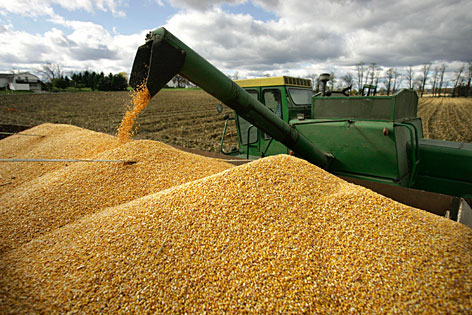
Agricultural News
Farmers Lean Slightly to More Yield Protection in Crop Insurance After Implementation of 2014 Farm Law
Wed, 13 Jul 2016 22:14:06 CDT
 The 2014 Farm Bill is the latest version of a national program that has been in place to support the agricultural production sector since the 1930s. Jason Bradley with the Noble Foundation says that while the new policy brought many changes, the following comments specifically focus on how farmers' crop insurance choices changed when the 2014 Farm Bill took effect.
The 2014 Farm Bill is the latest version of a national program that has been in place to support the agricultural production sector since the 1930s. Jason Bradley with the Noble Foundation says that while the new policy brought many changes, the following comments specifically focus on how farmers' crop insurance choices changed when the 2014 Farm Bill took effect.
According to Bradley, "We looked at factors tied directly to crop insurance policy including the 2014 Farm Bill as a whole; the amount of the insurance premium subsidized by the federal government; available commodity program payments such as Agricultural Risk Coverage (ARC), Price Loss Coverage (PLC), Average Crop Revenue Election (ACRE), Supplemental Revenue Assistance (SURE) and Direct and Counter-Cyclical Program (DCP); the amount of a selected county enrolled in a particular commodity program; the percentage of the selected county covered by enterprise units; and the availability of the Supplemental Coverage Option (SCO). We also examined factors not directly tied to policy such as farm location, commodity produced, commodity futures price and previous yields.
"Here, we will only discuss a single factor of the 2014 Farm Bill: coverage level. By looking at the coverage levels from 2008, the first year of the previous Farm Bill, through the most recent USDA reports, we were able to see if there was a shift in coverage levels based only on the introduction of the 2014 Farm Bill. Because crop insurance coverage can be obtained in two major categories (i.e., revenue protection and yield protection), the analysis was conducted for each type in order to compare the influence of the direct and indirect factors on each type.
"We found that the average coverage level increased by 0.13 percent for producers who chose an insurance plan based on revenue protection. Producers who selected yield protection were influenced slightly stronger by the 2014 Farm Bill, having an increase in crop average insurance coverage levels by about 0.23 percent. While these percentages may not seem like major shifts or jumps in coverage levels, the overall implications are important. To determine this, we have to ask two questions: Why is there an overall increased shift due to the 2014 Farm Bill? Why is there a major difference between the two types of coverage?
"Without hundreds of surveys, it's difficult to say what caused the increase in coverage levels. But, we can look at what changed when the 2014 Farm Bill came out. With all the commodity programs that were removed, the Direct Counter-Cyclical Payment (DCP) program found itself among them. A purpose of this program was to provide a direct payment to producers based on their allocated base acres and yields. It's been shown that when someone's level of income is reduced, like the removal of a guaranteed government payment, they tend to not take as many chances and reduce their level of risk. In this case, it could be the risk of an income loss is reduced through crop insurance.
"So why is there a difference in the influence on revenue and yield protection policies? Yield protection looks at only the historical production and the current crop. If production falls below the coverage level, a payment ensues based on the projected crop price. On the other hand, revenue protection is based on the yield and expected price. If a drop in either causes the preset level of revenue, a payment is made. Because this protection is tied directly to a producer's proportional income, the loss of any guaranteed income creates a higher drive for risk aversion or higher levels of coverage."
Source- Noble Foundation, Ardmore, Oklahoma
WebReadyTM Powered by WireReady® NSI
Top Agricultural News
More Headlines...





